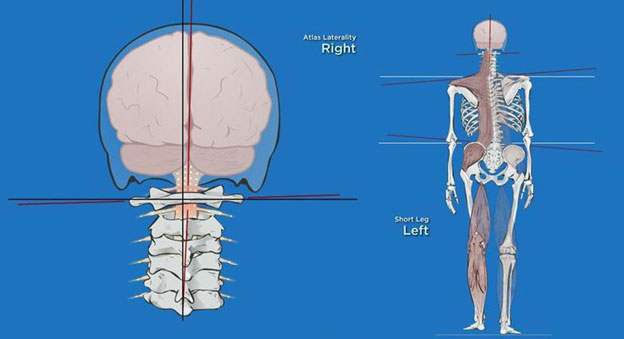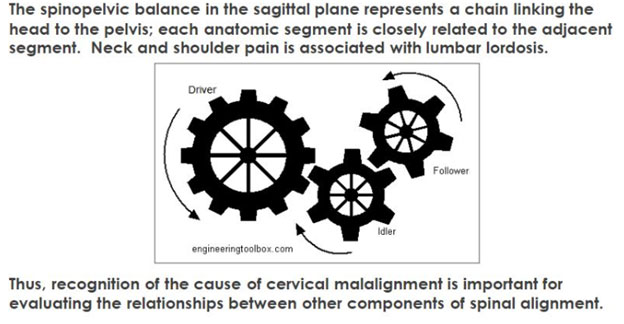You are probably familiar with traditional chiropractic. The twisting and popping we normally associate with chiropractic can be comforting to some; but really intimidating for others.
If you are looking for a chiropractic alternative that does not involve twisting, popping, or heavy thrusting of the spine, a light force approach is a good option. There are several light force techniques; NUCCA is one technique for addressing neck and back pain that is safe, gentle, and effective.
NUCCA is an acronym for the National Upper Cervical Chiropractic Association which was founded in 1966. However, the idea of focusing on the upper cervical spine was founded by B.J. Palmer in the 1920s. The benefits and safety of NUCCA have been researched extensively and published in several peer-reviewed medical journals.
Watch this video for a brief history of NUCCA
I have been practicing NUCCA Chiropractic in Chesapeake since 2002. I am board certified in NUCCA (National Upper Cervical Chiropractic Association). I also serve on the NUCCA Board of Directors as the Co-Chair of Education, and credentialed in spinal biomechanical engineering and a fellow in spinal biomechanics and spinal trauma recognized by SUNY Buffalo, Jacobs School of Medicine. I have studied and done practical rotations in spine surgery, pain management, neuroradiology, family medicine, and emergency medicine. I also serve on the Foundation Board for Chesapeake Regional Hospital.
How Does NUCCA Chiropractic Work?
NUCCA chiropractic techniques focus on correcting misalignment of the upper cervical spine. Precise and objective x-ray views of the head and neck are used to make mathematical measurements and evaluation of the misalignment.
Proper analysis of the x-rays allows the doctor to identify the relationship between posture and upper cervical misalignment.The NUCCA technique pinpoints the cause of misalignment, which means less need for repeated corrections.
The body wants to heal itself. Returning the upper cervical bones to a normal position promotes proper function in the body and spine and stimulates the body’s natural healing responses.
At Precision Spinal Care, I use the AMA Guides to the Evaluation of Permanent Impairment, 5th Edition. This manual gives precise guidance to measurements and quantifies the loss of motion segment integrity when spinal ligaments are compromised. In other words, I use evidence-based evaluation in order to pinpoint the cause of your pain.
NUCCA has helped many thousands of people of all ages regain and maintain their health throughout their lifetimes. NUCCA offers a conservative approach to healing that is specific to the individual and works to enhance the body’s own ability to be well.
Three basic steps to NUCCA: Analysis, Treatment, and Reevaluation
Analysis
NUCCA globally deals with spinal biomechanics by re-aligning the entire spine back to the vertical axis. Many problems or symptoms in the spine are compensatory, but not the primary problem. NUCCA identifies the primary lesion or problem affecting body balance instead of chasing compensatory pain.
During the examination, precise measurements of your spinal balance are taken. These measurements are used to determine if you have a significant imbalance that requires correction. They are also used to set a baseline of where you are. That baseline helps the doctor determine the progress of your spinal stability during follow-up visits and if another spinal correction is needed.
 Example: An upper cervical misalignment can affect the entire spine. For example, if there is a catastrophic injury to the low back, the lumbar region and legs can be affected. Likewise, if a catastrophic injury occurs to the neck, the entire body can become paralyzed. Thus illustrating how neurology works from top to bottom.
Example: An upper cervical misalignment can affect the entire spine. For example, if there is a catastrophic injury to the low back, the lumbar region and legs can be affected. Likewise, if a catastrophic injury occurs to the neck, the entire body can become paralyzed. Thus illustrating how neurology works from top to bottom.
If it is determined you have a spinal misalignment related to your pain that would benefit from NUCCA healthcare, a specific series of x-rays will be performed and mathematically analyzed before your first spinal correction. The NUCCA x-ray series uses low-radiation techniques along with specially designed filters to further reduce x-ray exposure to the patient.
If it is determined you do not have a spinal misalignment or your pain is related to another cause, we will refer you to the appropriate medical specialist.

Treatment
When it’s time for your spinal correction, the doctor will have you lie on your side on the adjusting table and position your head in a very specific fashion. The position and angle is based upon the information obtained from the x-rays.
The doctor will then take a specific stance, which again is determined by the x-ray analysis. The doctor will place their hand near your ear on the atlas. A number of very light and subtle corrections will move the spinal bones of the neck very gently.
The table does not move once the doctor has adjusted the headpiece to the proper position. There is no discernable pushing or twisting in the correction, nothing rapid or abrupt. The patient may feel light pressure at the point of contact. The correction usually takes a few minutes to perform.
When a NUCCA doctor determines the atlas has stopped moving, it is time to check the misalignment objectively. If the postural distortion has cleared out not only in the neck, but also the lumbar/pelvic area, a post x-ray is taken to confirm that an optimal correction has been obtained.
If parts of the misalignment are still present, it will be apparent and the doctor can put the patient back on the table and continue adjusting until an optimal correction is achieved.
The atlas is not locked in place like other vertebrae with facet joints so it can move freely with less force. NUCCA uses the atlas as a lever to set other vertebrae into motion as well as the skull.
The goal of a NUCCA correction is to create just enough force to overcome the resistance holding the atlas in the misaligned position without excess force. The concept is to only use enough force to overcome the resistance.
By matching the force of the resistance and slightly overcoming it allows for a specifically controlled correction: no pop, no crack, no over adjustments which might cause more harm than good.
Any force that moves the vertebra beyond the point of correction is excess force. An example is hitting the perfect golf shot, usually the golfer feels like the shot was effortless and that the ball was barely hit. When a bad golf shot occurs (a shank), typically there is lots of extra vibration and motion felt from the golf club.
A patient may not feel like anything is happening is two-fold: there is no additional force used in a NUCCA correction and there are fewer sensory receptors in the area where the doctor is adjusting the neck.
Remember, the doctor is only creating enough force to overcome the resistance, adding no additional force. Think of a soda can on a table when you put your finger next to it and then barely build up enough force until it slightly moves, this example is similar to how a NUCCA correction works.
Rather than muscling a bone into place, a NUCCA doctor is able to use the patient position, gravity, and their own body mass against the resistance to properly position the atlas back under the skull and over the spine.
NUCCA utilizes the principles of mathematics, physics, biomechanics, and kinesiology to balance the head on the neck, thereby relieving stress throughout other areas of the body. For example, if you tried to move a 100 lb boulder, it would be very difficult. However, if the boulder were delicately balanced like a teeter totter, one finger could move it.
Re-evaluation
Because it’s important to receive the best possible correction on your first visit, the doctor will take two post x-rays following the initial correction. These images will show the doctor how the spine responds to the first spinal correction. Post x-ray is typically done only after your first correction.
If the x-ray measurements indicate the correction was not optimal, the doctor will usually continue readjustment until a favorable balance is achieved. The better the spinal correction, the better the chance of recovery.
Because each spinal correction and healing response is unique to your body, you will be monitored closely during follow-up visits. These visits help ensure the spinal correction is maintained for as long as possible during the healing process. Recovery continues as long as the correction holds and optimal spinal balance is maintained.
Does the Doctor Adjust My Atlas Every Visit?
Not necessarily. Further upper cervical corrections are only given when the body demonstrates a sufficient misalignment is present.
It is helpful to remember healing is a process not an event. Traditional chiropractic is based on the adjustment itself being the process to heal.
In NUCCA holding the correction is the focus and therefore repeated corrections every visit are usually not necessary. Follow up visits are used to evaluate whether or not the correction has held.
Other therapies or services may be provided on follow up visits to help heal soft tissue damage, reduce pain and provide stability to your NUCCA correction.
Getting Started with Your Chiropractic Care
At Precision Spinal Care, I will perform a thorough examination of you before any treatment is performed or prescribed. I will sit with you and answer all of your questions after the initial examination and evaluation.
If it is determined that chiropractic is not the best solution, I will explain your condition and recommend the type of specialist who is most appropriate for you.
We understand that you need to explore all your options when you look for expert chiropractic care. At Precision Spinal Care, we are happy to help you determine the best way to address your specific needs and discuss all your options with you and your family.
Call our office at (757) 382-5555 to speak to the doctor or set up a consultation. You can also set up an appointment through our webpage.
Article inset
Article Inset

